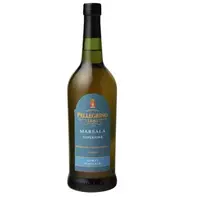Marsala wine

Marsala's strong dessert wine is considered a true symbol of Sicily. Experts note that Marsala wine is surprisingly similar to the equally popular Madera drink. However, unlike Madera, Marsala contains much more sugar in its chemical composition. Wine such as Marsala is subject to international legislation that regulates the quality of drinks whose quality is controlled and guaranteed by origin.
This means that Marsala wine can only be produced in those areas and by those winemakers that are provided for by law. Marsala wine is produced exclusively in the Trapani wine region. The history of this type of Sicilian wine is associated with a merchant from Liverpool, John Wodehouse, who somehow waited out a storm with his ship in the town of Marsala. The merchant tasted local Perfetoum wine, which was made in a rather interesting way.
The wine barrels were placed one on top of the other. Young wine of a new harvest was poured into the upper barrels, which, after a year of aging, gradually poured into the lower tiers of the barrels. Young wine was constantly added to the top barrels. To transport the wine, Mr. Woodhouse added some cognac alcohol. It is worth noting that the merchant's first experiments with wine were not to the taste of the discerning Liverpool public. John returned to Sicily in 1773 and continued his experiments with a blend of wine.
Soon, the Liverpool merchant achieved his goal, and a new type of wine conquered the whole of Great Britain, and then the world. Great Admiral Nelson was very fond of Marsala. That is why, after the victory at Trafalgar, Marsala was called in the UK nothing more than "victorious wine. " One of the varieties of Marsala wine is called Garibaldi sweet in honor of the famous Giuseppe Garibaldi, who loved to feast on a drink. In modern Sicilian winemaking, such varieties of white grapes as: Misolia, Grillo, Damaschino, as well as Catarrato are used to produce Marsala wine. In addition.
Marsala is produced from the red Nerello mascalese grape, Pignatello, as well as nero d'Avola. The best types of Marsala are made from Grillo grapes, as it has oxidation abilities. During the maturation of Marsal wine, ingredients such as: siphone, i. e. dry wort concentrate, a mixture of brandy and wort, as well as pre-cooked wort are added to the drink. Marsala wine differs in color and is divided into such types as:
Marsala rubino is produced from a mixture of red as well as white wine;
Marsala oro or golden Marsala is a wine that is produced from white grape varieties;
Marsala amber or amber Marsala is a drink for the preparation of which white grapes are also used.
Depending on the aging time of wine, such types of wine are distinguished as:
Marsala "finé, " i. e. one-year aged wine;
Marsala "superjore" or top quality wine aged for at least two years;
Marsala "superiore riserva, " i. e. long-term and superior quality wine aged for at least four years;
Marsala "vergine" or non-fermented five-year-old wine;
Marsala "vergine riserva" is an impatient wine of at least ten years of aging.
marsala wine 172 kCal
Energy value of marsal wine (Ratio of proteins, fats, carbohydrates - ju):
Proteins: 0.5 g (~ 2 kCal)
Fats: 0 g (~ 0 kCal)
Carbohydrates: 20g (~ 80kCal)
Energy ratio (bj | y): 1% | 0% | 47%
 Español
Español Français
Français Português
Português Русский
Русский 简体中文
简体中文 繁體中文
繁體中文 日本語
日本語 한국어
한국어 العربية
العربية Türkçe
Türkçe Қазақ
Қазақ Deutsch
Deutsch Italiano
Italiano Українська
Українська
